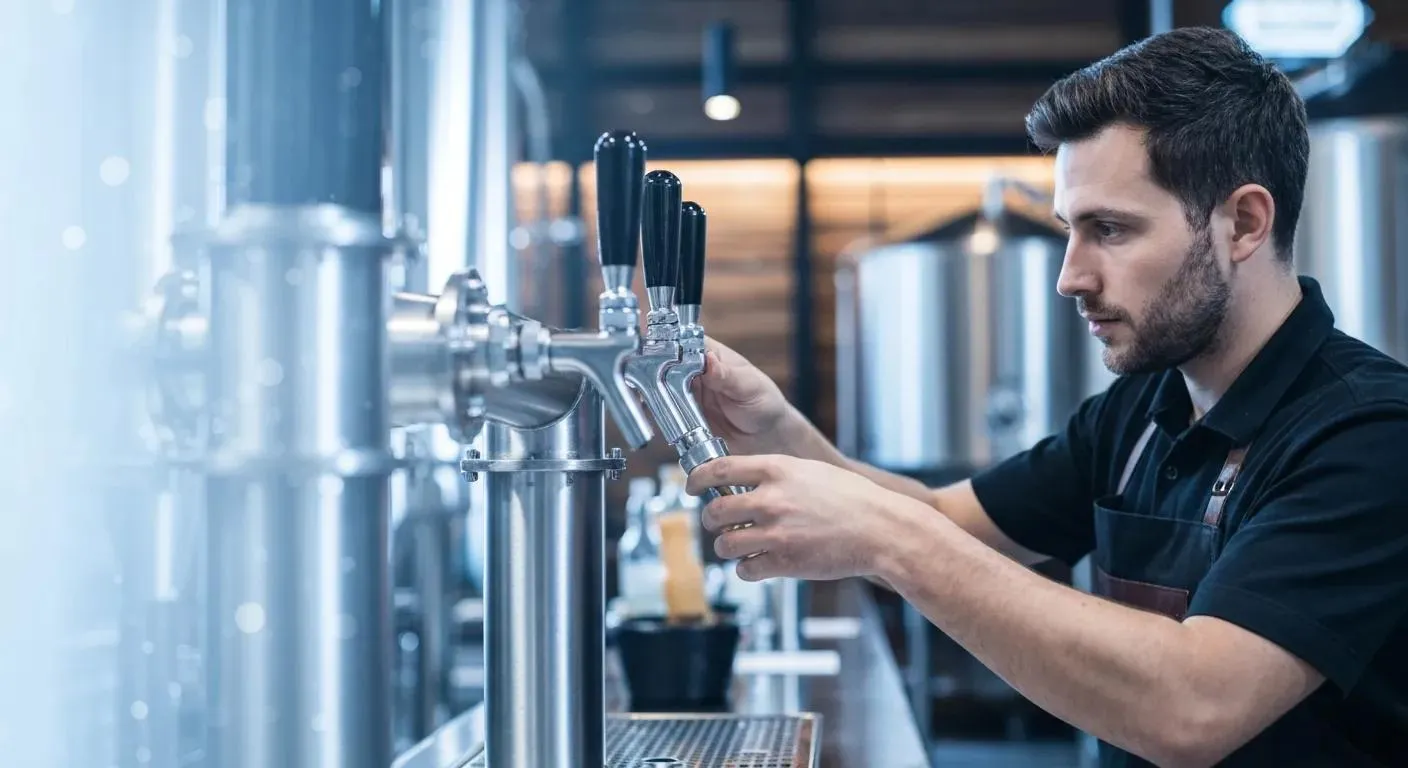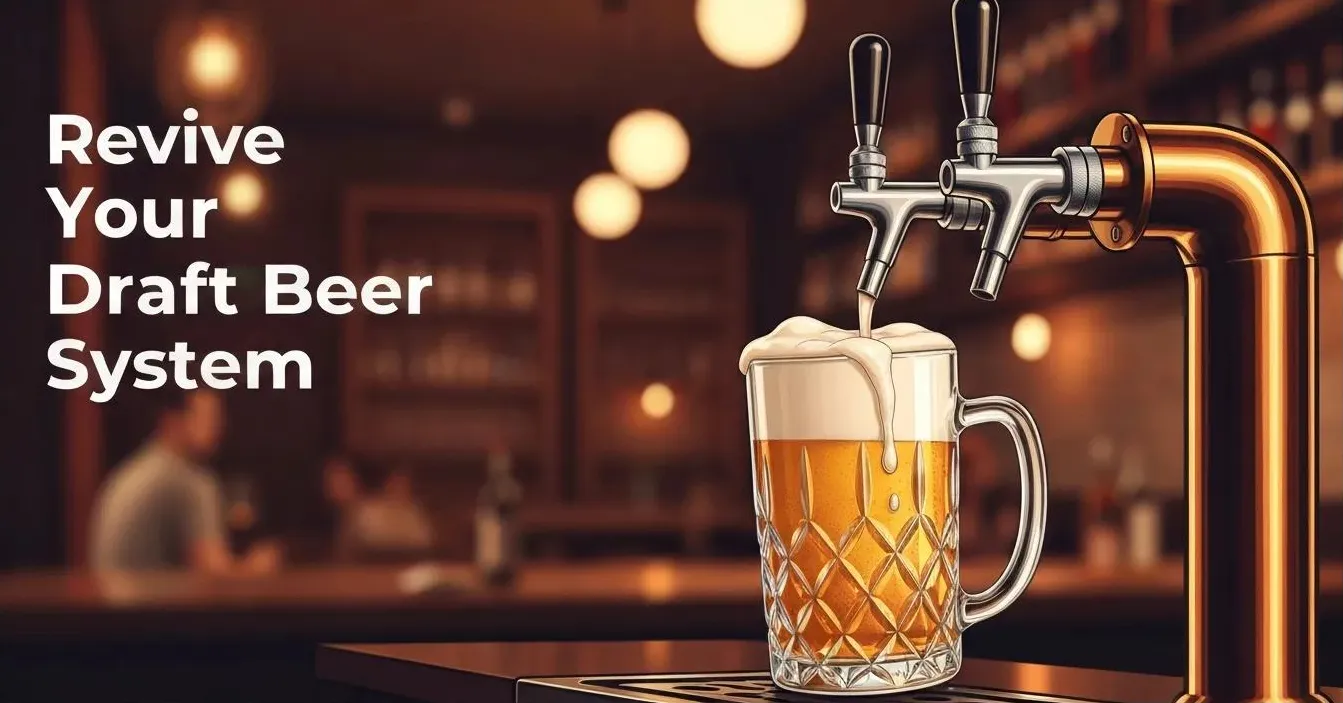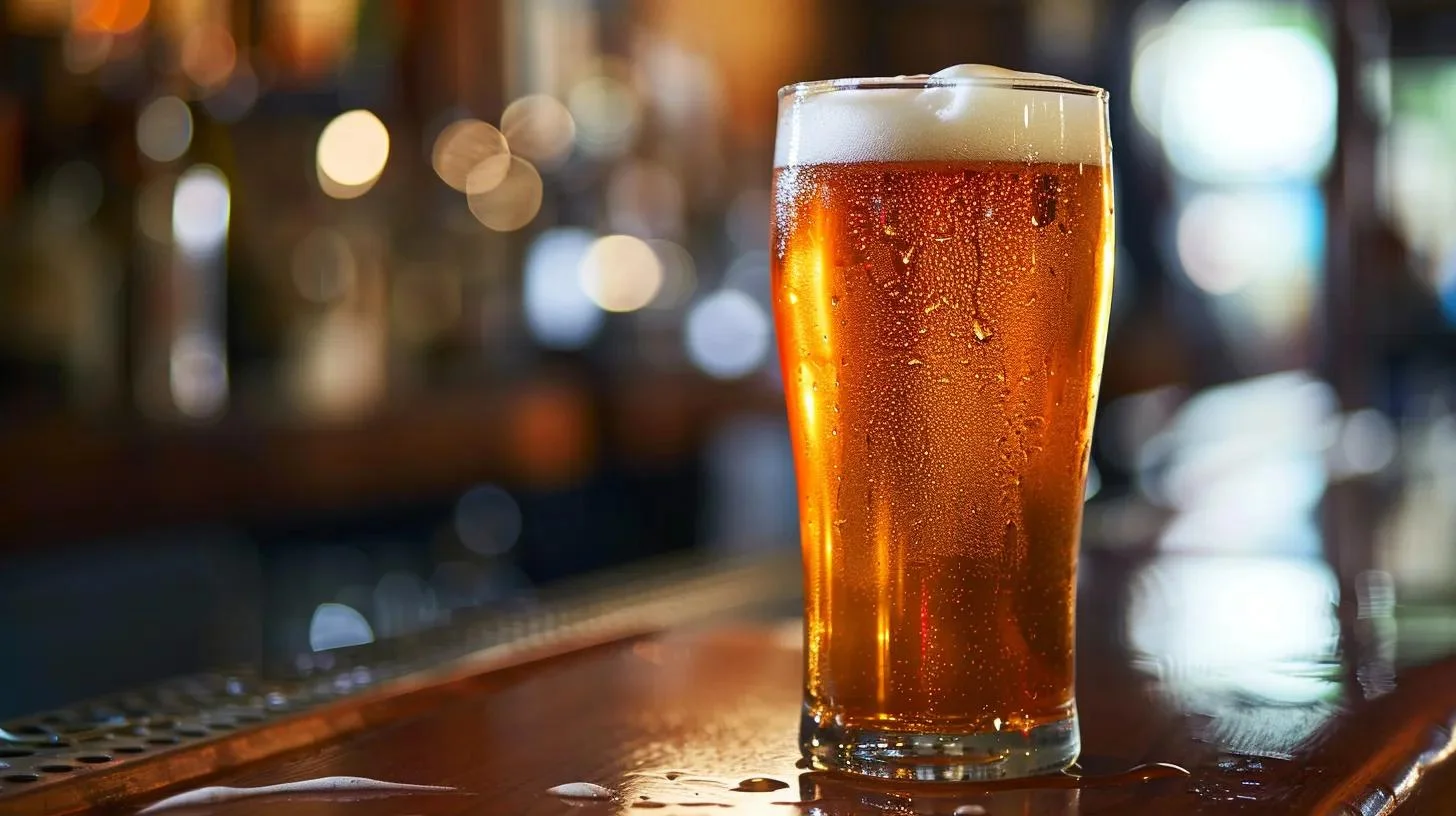Taprite Regulators: Ensuring Optimal Beverage Dispensing

Choosing the right regulator is crucial when setting up beverage systems, whether for beer, soft drinks, or wine. Taprite regulators are popular due to their reliability and ease of use. These regulators are designed to control CO2 pressure levels accurately, ensuring beverages have the perfect carbonation and taste. Taprite regulators can handle various gases, including nitrogen and mixed gases (beer gas), essential for optimal pressure and carbonation in brewing applications.
Taprite offers regulators suited for both commercial and homebrew settings. For instance, most of their primary beer regulators come with 5/16” barb shutoff outlets, which are handy for managing different kinds of setups. Homebrewers and restaurant owners alike especially value these regulators for their durability and performance over time. If you’re looking for high-quality equipment, consider the advantages that Taprite provides, like their primary regulators for beer. These regulators interact seamlessly with the gas tank, featuring pressure gauges that monitor the status of the gas tank, making installation and setup easy.

When integrating these into your system, installation is straightforward, requiring minimal adjustments. You can get different outlet fittings tailored to your specific needs, such as the 1/4” Flare fittings for soft drinks, or other specialty fittings. Regardless of the type of beverage, Taprite consistently delivers precise and reliable performance, simplifying both setup and maintenance.
Key Takeaways
- Taprite offers reliable CO2 regulators for beverages.
- Installation is easy and supports various fittings.
- Suitable for both commercial and homebrew settings.
Understanding Taprite Regulators
Taprite regulators are essential for managing gas flow in beverage systems, offering precision and durability. They are designed with compliance in mind. Understanding the specifics of their types and unique features can help users make informed decisions.
Types of Taprite Regulators
Taprite offers various regulator types, each suited for different applications. The CO2 Regulator is common for beverages, ensuring consistent pressure. Compared to a single regulator, upgraded models offer better pressure control and reliable leak prevention. Primary Regulators manage the initial gas from the tank, while Secondary Regulators adjust pressure further down the line.

Dual Gauge CO2 Regulators provide readings for both output and tank pressure, aiding in precise monitoring. These dual gauges enhance functionality and performance, especially for high-volume dispensing through multiple taps. The Series 740 is notable for its high flow capacity, making it suitable for systems that require larger volumes of gas.
The working pressure range differs based on the regulator’s target application, such as 0-120 psi for soft drinks and lower ranges for beers.
Design and Features
Taprite regulators boast several design elements that enhance functionality and reliability. A CGA320 connection is standard, ensuring compatibility with most CO2 cylinders. The 1/4" Barb shutoff valve facilitates easy attachment to gas lines.
A gauge cage protects the gauges from damage, while the O-ring seal ensures a secure, leak-free connection. Regulators are tested for safety, adhering to UL Standard 252 for quality assurance.
For durability, some models include poly and zinc bonnets. These materials offer resistance against wear and tear, contributing to the regulator's longevity. Understanding these features can help users choose the right Taprite regulator for their needs.
Installation and Operation
Installing and operating a Taprite regulator involves setting the equipment up correctly and fine-tuning the gas pressure. Each step ensures that the system functions safely and efficiently while meeting the specific requirements of the beverage being dispensed.
Setting Up Your Regulator
When setting up the Taprite regulator, it is important to choose the correct Regulator Gas Type like CO2 or nitrogen. Minimal tools needed for installation make the process convenient and hassle-free. Begin by attaching the regulator to the gas cylinder using the appropriate Inlet Type. For CO2 systems, ensure the O-Ring Seal to CO2 Cylinder is in place to prevent leaks. Use Barbed Outlet or 1/4” MFL Ends for connecting hoses, depending on the fitting required.
Securing the fittings is crucial. Installing Barbed Swivel Nuts can help achieve a tight connection. Check all connections for potential gas leaks before fully operating the system. Safety is a priority, so make sure to follow all manufacturer instructions and recommendations during this setup process to ensure durability and reliability.
Adjusting Gas Pressure
To adjust gas pressure, locate the Adjustment Knob or handle on the front of the Taprite regulator. Turn the knob to adjust the Output Pressure to the desired level for dispensing. This pressure adjustment is measured in PSI (pounds per square inch) and should match the requirements of the beverage system being used.
The process requires careful monitoring. After setting, make sure to test the system to confirm the output is consistent. Regular Pressure Adjustments might be necessary, especially as external conditions change, like temperature or altitude. Always verify that the regulator maintains the desired pressure for optimal operation.
Regulator Applications
Taprite regulators excel in a variety of applications due to their reliability and versatility. They are well-suited for both commercial environments like bars and restaurants and home brewing setups. Different designs cater to specific pressure requirements.
Commercial Use
In commercial settings, Taprite regulators are a popular choice among bars, restaurants, and breweries. These regulators ensure precise pressure control, critical for maintaining the quality of beverages like beer and soft drinks. Professionals often choose Taprite for its reputation as a reliable solution.
Installed under counters or in jockey boxes, these regulators help streamline operations by offering a range of pressure from low to high, perfect for serving multiple types of beverages. The ability to handle different pressure levels allows use in both pre-mix and post-mix systems, making them versatile in dynamic settings.
Home Brewing Applications
For home brewers, Taprite regulators are a valuable component of any draft beer system. They allow users to experiment with carbonation levels, ensuring the beer is served just right. These regulators are available with different fittings, making them adaptable for various setups, such as kegging systems and beer dispensers.
A Home Brew Draft Beer System often requires consistent and precise pressure to deliver the perfect pour. Taprite regulators are favored for this task due to their durability and ease of use. Homebrewers appreciate the clear settings and robust construction.
Maintenance and Troubleshooting
Proper maintenance and timely troubleshooting can greatly enhance the performance and lifespan of Taprite regulators. Regular care is essential to prevent minor issues from becoming major problems. Addressing common problems with the right approach ensures efficient pressure regulation and reliable operation.
Regular Care for Longevity
To extend the life of Taprite regulators, users should follow a consistent maintenance routine. Rebuild kits are useful for replacing worn-out parts and often include essential components like seals and check valves. It’s crucial to examine these parts regularly for signs of wear and tear.
Lubrication of moving parts can significantly reduce wear. It assures that the system remains smooth and responsive, contributing to the reliable performance of the regulator.
Resolving Common Issues
Common issues with Taprite regulators include leaks and pressure inconsistencies. A high pressure gauge is crucial for identifying and resolving pressure inconsistencies by monitoring the CO2 tank's gas reserves. Checking the check valves regularly helps in identifying leaks early. If pressure regulation becomes unstable, inspecting the low pressure gauge and the product filter regulator can help pinpoint the cause.
Replacing worn seals with quality rebuild kits can solve pressure creep problems. Moreover, ensuring the system is free of dirt with a 10-micron filter prevents many common problems related to contaminants.
For accurate performance, calibrate the regulator periodically. Adjustments should be made carefully to maintain the correct pressure levels. By addressing these issues promptly, Taprite regulators can continue to operate effectively and reliably.
Selecting the Right Regulator
Choosing a regulator involves understanding specific needs and comparing different series to find the most suitable model. Consider the type, pressure requirements, and compatibility with the desired application to ensure optimal performance.
Considering Your Needs
The first step in selecting the right regulator is identifying individual requirements. Different models cater to various applications, such as primary and secondary models, which are used for different stages of gas dispensing. Primary models often include features like a 5/16" barb shutoff with a check valve, useful for maintaining safety and reliability.
When working with specific tubing, like 1/4" ID tubing, find a regulator model that is compatible with those dimensions. Pressure settings play an important role, particularly for applications requiring precise control, such as 12-14 psi for beer dispensing.
Frequently Asked Questions
Taprite regulators are essential for maintaining the right pressure in beer dispensing systems. They are designed to handle both CO2 and nitrogen gases, ensuring your beverages are served perfectly. Proper maintenance and troubleshooting can extend their lifespan and improve performance.
How do you adjust the pressure on a CO2 regulator?
To adjust the pressure, first make sure the regulator is connected securely to the CO2 tank. Turn the adjustment knob clockwise to increase pressure, or counterclockwise to decrease it. Watch the gauge to reach the desired setting, usually between 12-14 psi depending on the type of beer.
What is the function of the pressure relief valve on regulators?
The pressure relief valve is a safety feature designed to prevent excessive pressure build-up. It releases gas if the pressure inside the system exceeds a safe level, protecting both the equipment and the user from potential hazards. The proper functioning of this valve is crucial for safety.
What are the steps for properly maintaining a CO2 regulator?
Regular maintenance includes checking for leaks, ensuring all connections are tight, and cleaning any debris from the valves. Inspecting seals and O-rings for wear and replacing them as needed can prevent leaks. Periodically test the pressure relief valve to ensure it operates correctly.
How do you troubleshoot common issues with beer regulators?
If experiencing pressure creep or leakage, start by checking all connections and seals for tightness. Ensure no debris is blocking the regulator or causing a sticking valve. If issues persist, consult manufacturer guidelines or consider contacting a professional for further assistance.
Are there different types of regulators for CO2 and nitrogen?
Yes, there are specific regulators designed for CO2 and nitrogen. Each regulator is calibrated for the specific gas it will control. This ensures proper flow and pressure management, so it's essential to use the appropriate regulator for each gas type.
What should be considered when selecting a replacement regulator or rebuild kit?
When selecting a replacement, consider the gas type, the pressure range you need, and compatibility with your existing system. Be aware that some products may contain chemicals recognized by the state of California as harmful and capable of causing cancer, birth defects, or reproductive harm. Ensure the parts meet industry standards and come from reputable manufacturers. These chemicals can also cause other reproductive harm; consult official warning sites for more information. Checking for the availability of a rebuild kit can also be valuable for long-term maintenance.
Summary
Taprite regulators are essential tools used in various beverage dispensing systems. They are designed to control the pressure of gases, ensuring that beverages are served optimally. These regulators are crafted with precision and adhere to safety standards for reliable performance.
Features
- UL Standard Compliance: Taprite regulators meet UL Standard 252 for Compressed Gas Regulators, showcasing their quality.
- Versatility: Available for use with beer, wine, and soft drinks.
Types
- Primary Regulators: Suitable for both commercial and homebrew applications. They typically range from 0-60 PSI for beer dispensing. More details are available on their primary regulators for beer.
- Soft Drink Regulators: Featuring 1/4" Flare fittings for easy installation. Taprite's primary regulators for soft drinks are user-friendly.
- Secondary Regulators: Useful for additional control, allowing fine-tuning of output pressure. They can be adjusted according to specific needs, such as settings between 12-14 PSI for certain applications.
Applications
- Beer and Wine Dispensing: Low-pressure regulators provide smooth flow and maintain beverage quality.
- Soft Drink Systems: High-pressure regulators handle a wider range of pressures, ideal for pre-mix and post-mix setups as seen in this document.
Taprite regulators offer reliability and ease of use in beverage dispensing systems, catering to various needs with a focus on safety and performance.



